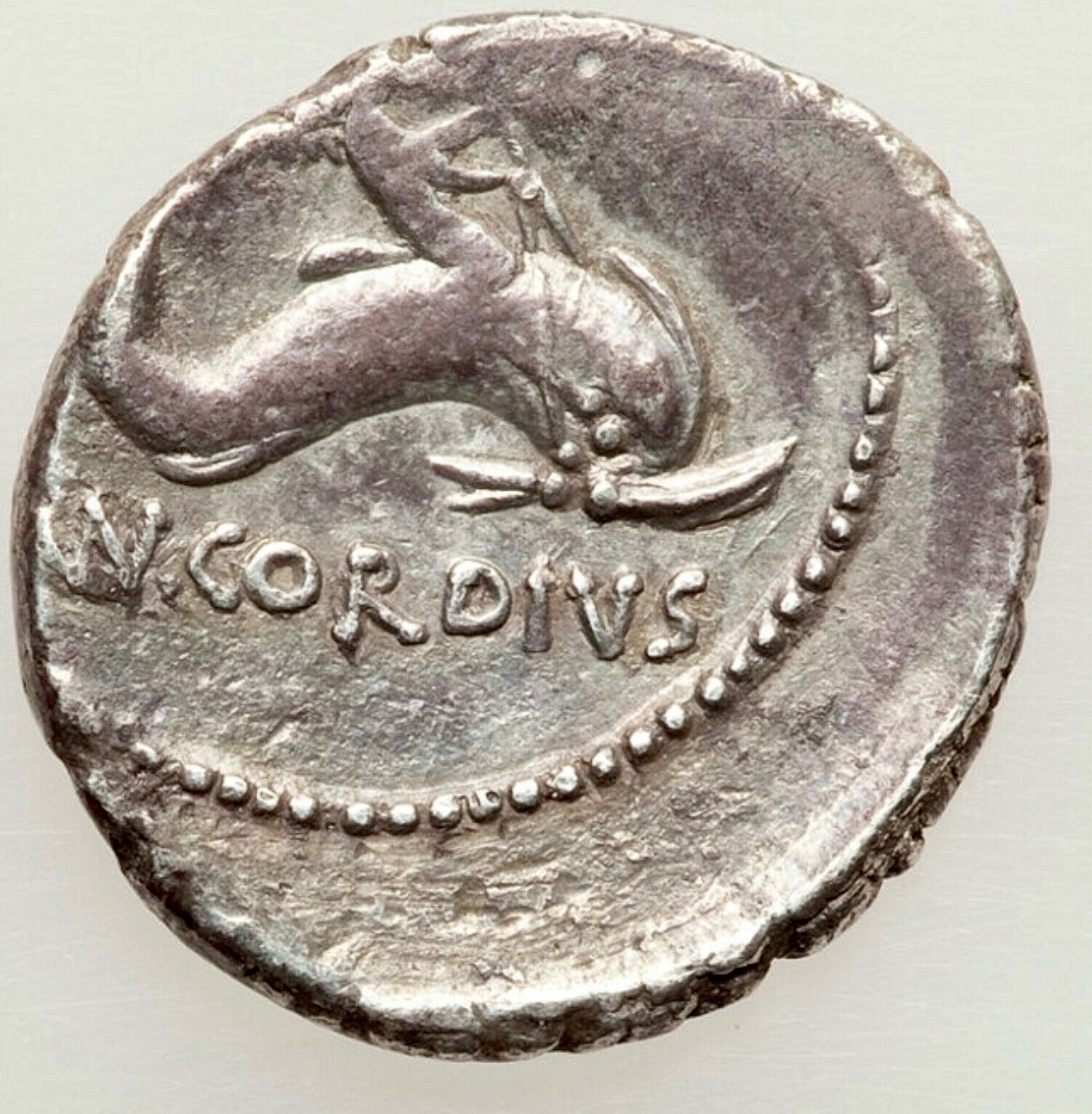-40%
CUPID RIDES DOLPHIN INTO Roman Republic 46 BC Mn. Cordius Rufus AR denarius VF
$ 92.4
- Description
- Size Guide
Description
Moneyers of the Roman RepublicDuring the Roman Republic, moneyers were called tresviri aere argento auro flando feriundo, literally "three men for casting (and) striking bronze, silver (and) gold (coins)". This was a board of the college of the vigintiviri, or Board of twenty (later briefly the Board of twenty-six), vigintisexviri. The title was abbreviated III. VIR. AAAFF. or even III. VIR. A.P.F. (tresviri ad pecuniam feriundam) on the coinage itself. These men were collectively known as the tresviri monetales or sometimes, less correctly, as the triumviri monetales. The singular is triumvir monetalis.[1] In English, they are most correctly called mint magistrates, since 'moneyers' may imply that they actually struck the coins themselves.
In the early times of the Republic, there are few records of any officers who were charged with the superintendence of the mint, and there is little respecting the introduction of such officers apart from a very vague statement from Pomponius.[2] It was thought by Niebuhr[3] that they were introduced at the time when the Romans first began to coin silver, in 269 BC, but modern authors consider this too precise a reading of Pomponius.[4] It is known that a college of three was in existence c. 150 BC.[5] A fourth magistrate was briefly added by Julius Caesar in 44 BC during a time when the mint output was particularly large (in preparation for a war against Parthia).
These magistrates were responsible for the production of the Roman coinage. They were not simple mint workers (monetarii), they were officials who controlled the process, including the design on the coins themselves. Membership in the vigintisexvirate was for most of them the first step on the cursus honorum, the age when the post could be held appears to have been approximately 30, although some held it at a greater age[6] and there is some evidence that the position was appointed rather than elected.[7]
Some coins appear to have been special issues bearing the legend S C or EX S. C. (ex senatus consulto). Some of these special issues do not bear the signature of a triumvir monetalis, but the inscription CVR. X. FL. i. e. curator denariorum flandorum, or are signed by praetors (P), aediles (CVR AED), or quaestors (Q). During the Roman Empire, this appears on the bronze coinage only (except during the first few years of hero's reign, when it is also found on the precious metal coinage), and it suggests that although the emperor kept the minting of gold and silver coins under his own authority, the Senate, as a sop to its pride, was allowed to retain nominal authority over bronze coinage.
In any case, the magistrate's control of the legend on the coinage lent itself to the production of coins containing political messages. This was self-advertising to further the political career of the moneyers themselves (or their families) or that of their patrons; in a word, propaganda.[8]










